Synthetic vs Natural: Pros § Cons
Why Second Life Matters More Than First Impressions
From alpine expeditions to everyday wear, the choice of fiber is never trivial. It affects comfort, durability, and performance, but also determines the environmental footprint of our clothing and gear. Increasingly, the debate is framed around synthetic vs natural fibers, which performs better, and which is more sustainable? The truth is nuanced. Each fiber, whether down, wool, or polyester, brings its own strengths and weaknesses. What matters just as much as performance, however, is what happens at the end of a product’s life. Let’s take a closer look.
Down (Duck or Goose Feathers)
Exceptional warmth-to-weight ratio
Down is one of the most efficient natural insulators in the world. At equal weight, it retains more warmth than almost any synthetic alternative. This is why down jackets, duvets, and sleeping bags remain the benchmark for cold climates, performing exceptionally in dry conditions and remaining reliable even in moderate humidity.
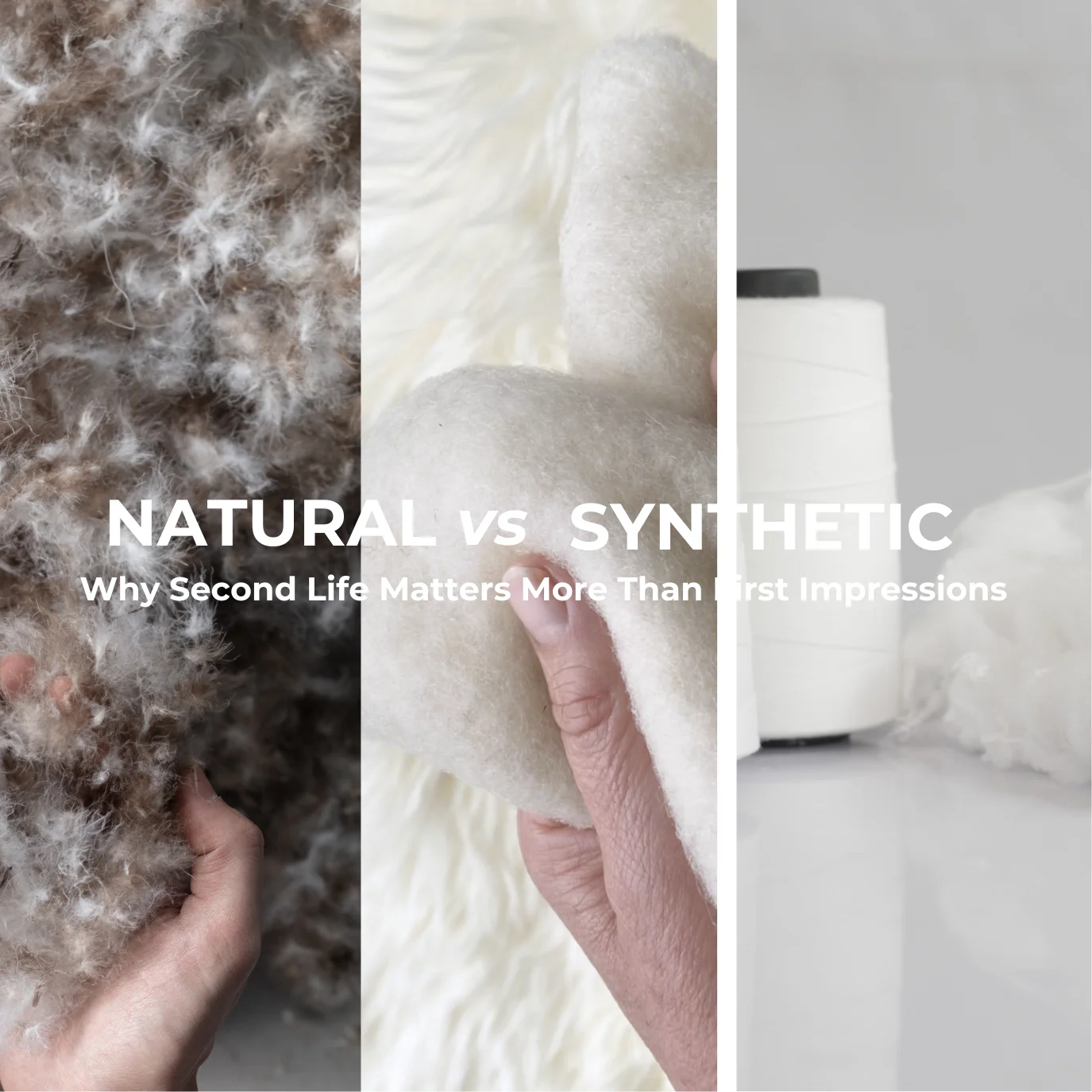
Compressibility
Down can be packed extremely small and regains its loft quickly, making it the ideal companion for alpine expeditions, camping trips, and travel where space is limited.
Durability
When properly cared for, good down retains its properties for years. A well-maintained down jacket can remain just as warm a decade later.
Limit
The main weakness of down is heavy moisture: in prolonged wet conditions, it clumps together and loses its insulation capacity. However, thanks to the natural oils present in feathers, down can handle light humidity without major impact on performance. Without additional treatments or technical protection, down performs well in cold and moderately damp conditions, though heavy wetness will still reduce its insulation.
Wool
Performs even when damp
Unlike down, wool retains part of its insulating capacity even when wet. This makes it particularly reliable in humid or unpredictable climates.
Thermal regulation
Wool “breathes” naturally, helping the body maintain a stable temperature. It keeps you warm in the cold, but avoids overheating in warmer conditions.
Odour management
Wool fibers neutralize odours naturally, making them especially valuable for garments worn over several days, from base layers to outdoor wear.
Comfort
Wool is naturally soft, stretchy, and pleasant to wear directly on the skin. It provides comfort without sacrificing performance.
Durability
Wool has natural resistance to fire and UV, performing better than polyester in these areas. With proper care, it offers long-lasting performance.
Synthetics (Polyester)
Economical and practical
Polyester is cheaper to produce than natural fibers and widely available. For many brands, this makes it attractive for large-scale collections.
Performance in wet conditions
Synthetic fibers are lighter in humid environments and dry more quickly than down or wool. This is one of their key advantages for active sports and wet climates.
Limitations in insulation and comfort
At equal weight, synthetics often insulate less effectively than down. They also retain odours and are less breathable, which can affect comfort over time. Polyester can feel more “plastic” to the touch compared to the softness of natural fibers.
Durability
Synthetic fibers are durable in terms of abrasion resistance, but performance and comfort may decline faster with extended use. Unlike natural fibers, they also do not biodegrade, and most are difficult to recycle.
Practical Comparison
Usage Guide
DOWN
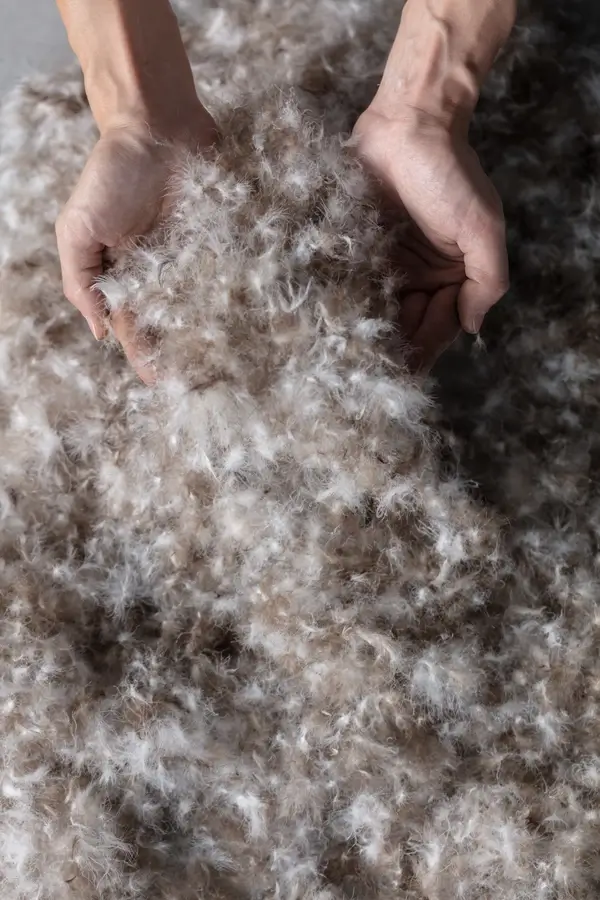
WOOL
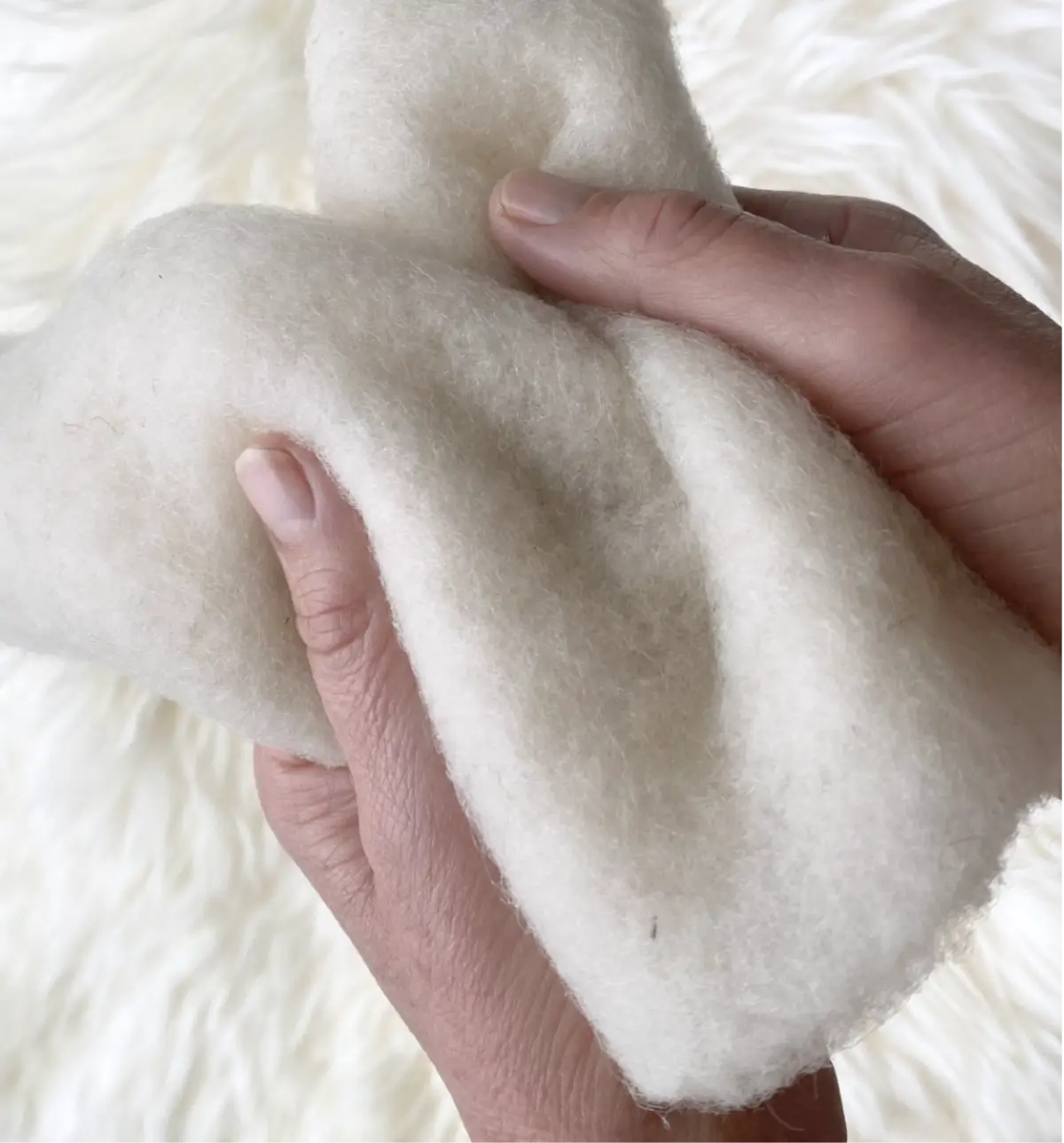
synthetic
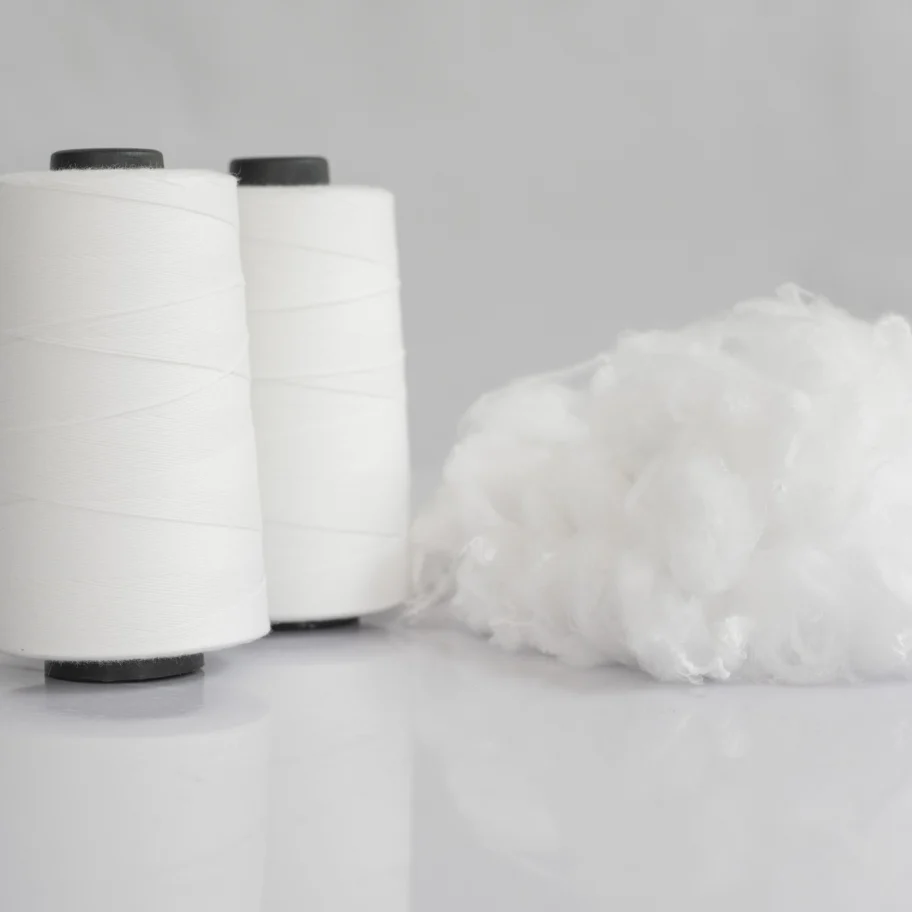
Beyond the Fiber: Why Second Life Matters
Focusing solely on performance misses a bigger issue: end-of-life. How fibers are handled once a garment is discarded has as much impact as the material itself.
The biggest challenge today lies in fiber blends. Mixing wool or cotton with polyester might enhance performance, but it makes recycling nearly impossible. These products often end up in landfills, regardless of how well they performed during their first life.
Re:Down®: Extending the Life of Natural Insulation
At Re:Down®, our philosophy is simple: don’t waste what nature has already perfected.
We collect post-consumer products containing down, from bedding to jackets, and recover the insulation through a process that uses only water and heat, with no added chemicals. The down is sterilized, cleaned, and sorted before being returned to the market as high-quality, GRS-certified insulation.
The performance is identical to virgin down: warm, light, and durable. The environmental impact, however, is drastically lower. By extending the lifespan of natural fibers, we avoid unnecessary extraction of new resources.
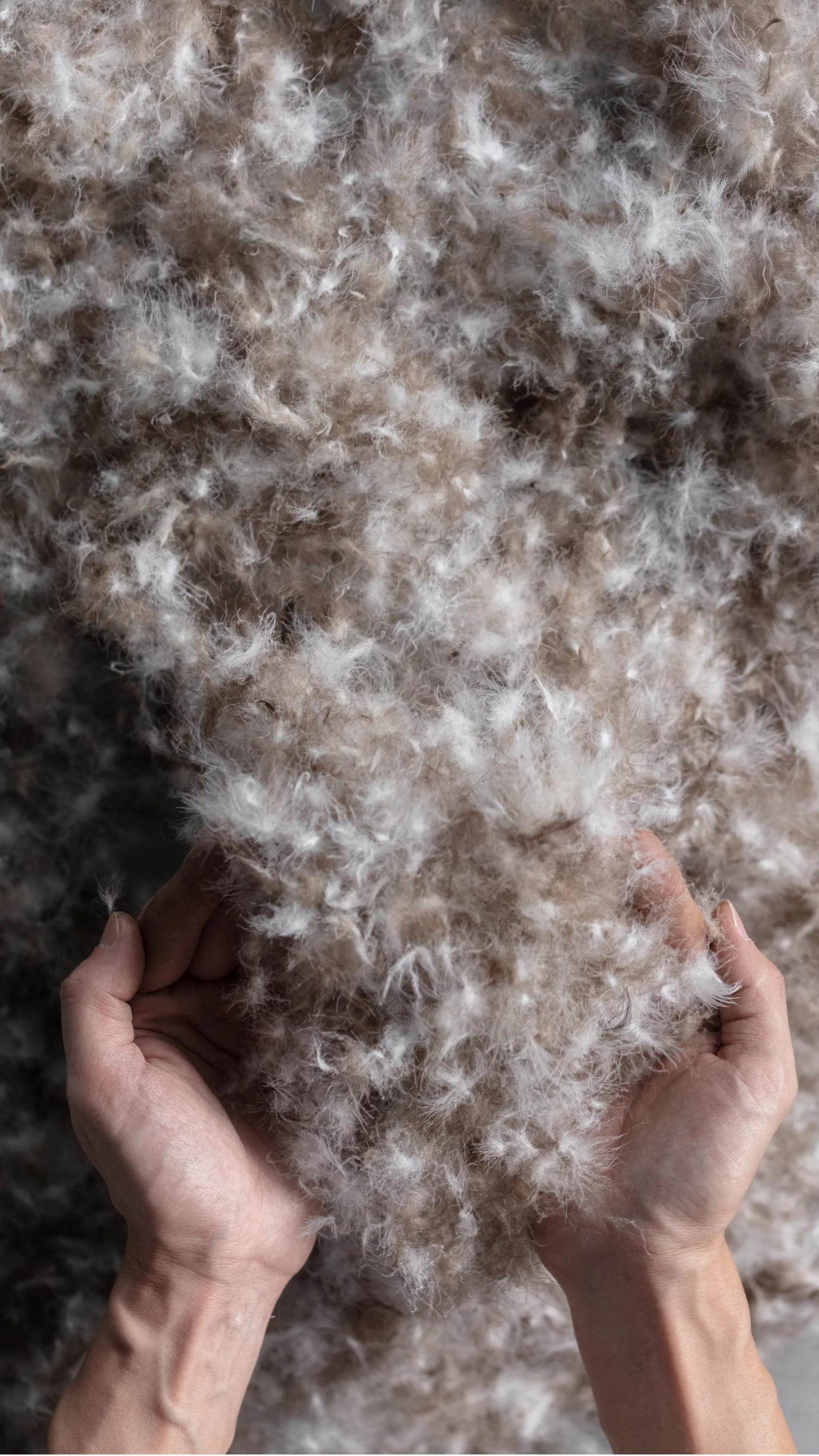
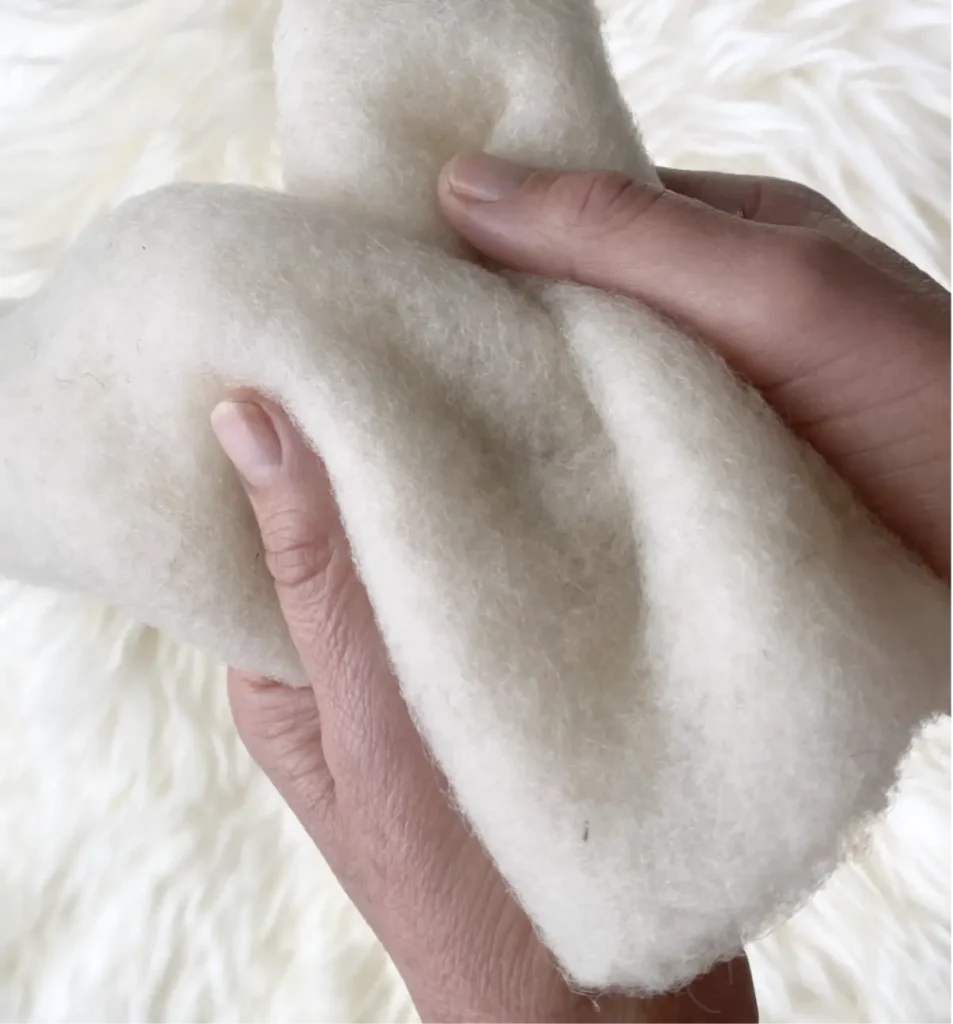
Re:Wool® : Giving Wool a New Purpose
The same principle applies to wool. With Re:Wool®, we recover pre-consumer wool waste from spinning mills, short fibers that would otherwise be discarded. These are mechanically processed into a soft, lofty insulation, combined with 20% PLA (a compostable fiber derived from corn) to maintain structure and resilience.
The result is:
Like Re:Down®, Re:Wool® is GRS-certified, and wool sources come from RWS-certified mills.
The Future Is Circular
When it comes to fibers, there is no “perfect” choice. Each material has its place:
The real question is: what happens after first use?
At Re:Down®, we believe the future isn’t just natural or synthetic : it’s circular. By giving materials a second life, we reduce waste, extend performance, and prove that sustainability and quality can go hand in hand.
Because what really matters isn’t just the first impression of a fiber.
It’s the second life we give it.
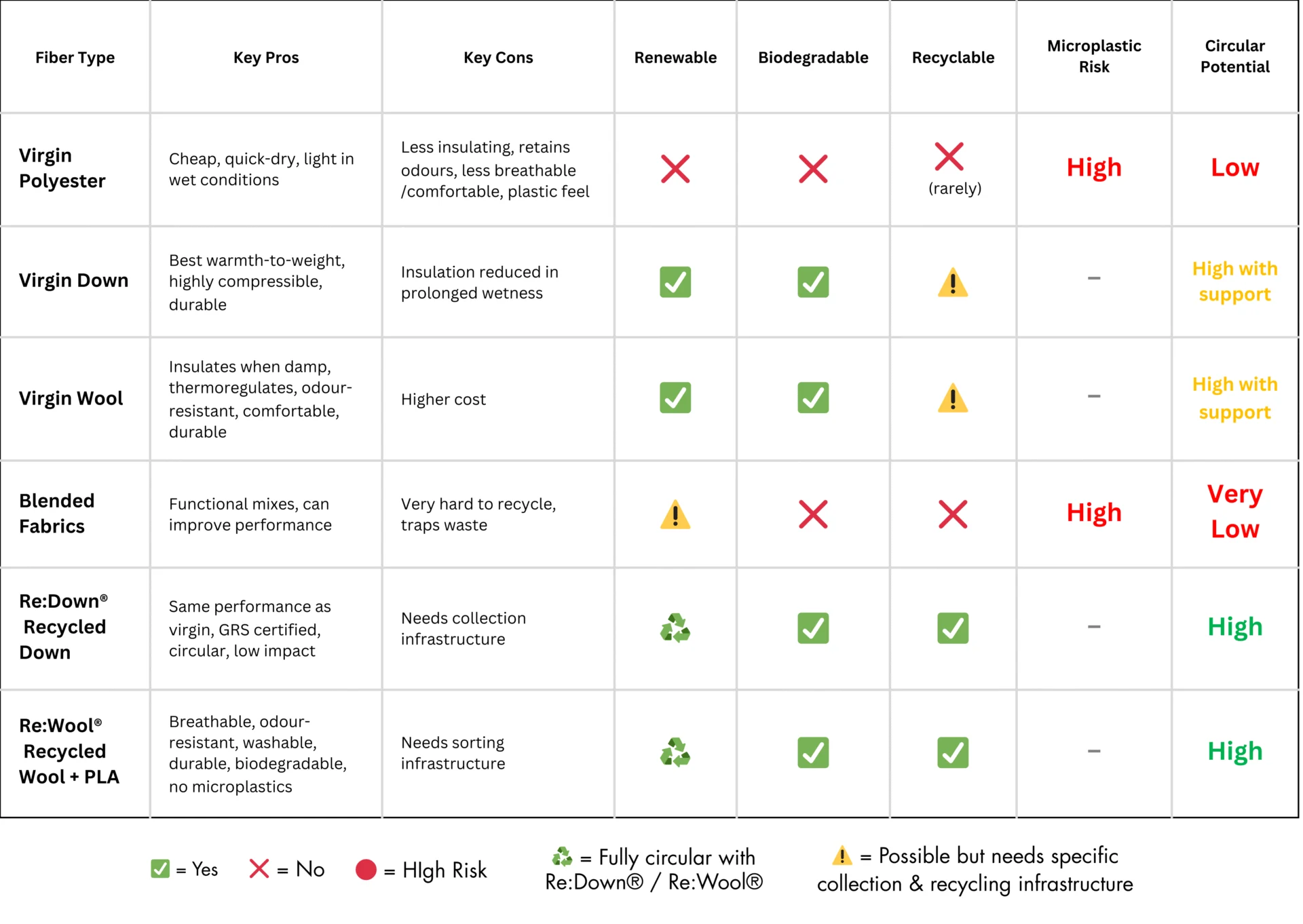
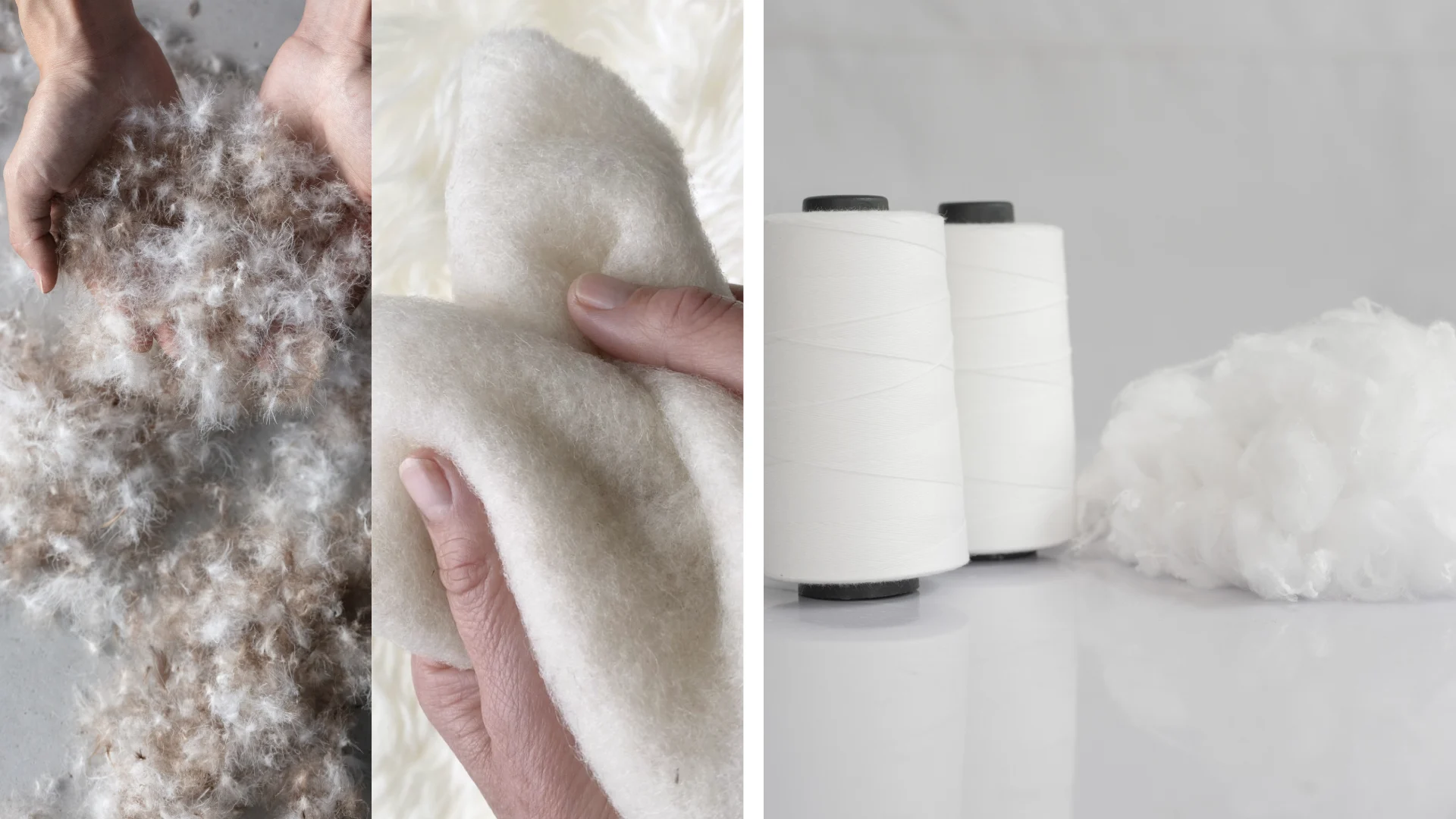
Posted on September 22, 2025




